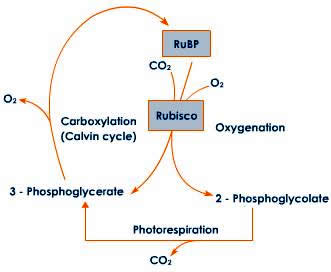Explain photorespiration with the help of diagram.
Dear Student,
Please find below the solution of your asked query:
Photorespiration-
Photorespiration Pathway-

Features-
Keep asking!!
Regards
Please find below the solution of your asked query:
Photorespiration-
- It is a process in which oxidation of ribulose‐1,5‐bisphosphate takes place with the help of enzyme Rubisco, producing a 3‐carbon compound, 3‐phosphoglycerate, and a 2‐carbon compound, phosphoglycolate.
- It is considered as a wasteful process because about 25 % of the CO2 fixed during photosynthesis is lost during the process moreover there is no formation of ATP & NADH.
Photorespiration Pathway-

Features-
- The carbon lost is not retrieved. The plant may lose as much as half of the CO2 fixed during photosynthesis by this process.
- No energy rich compound is produced and rather is a wasteful loss of ATP and NADPH.
- With the increase in O2 concentration, affinity of RUBP carboxylase for O2 increase and for CO2 decreases. Therefore increased oxygen level increases, photorespiration, while increased carbon dioxide level decreases photorespiration.
- It involves three organelles - chloroplast, perioxisomes and mitochondria.
- Increase in temperature leads to more photorespiration that means more loss of photosynthetically fixed carbon.
- It occurs in light and has no relation with the normal respiration.
- It decreases the yield of C3 plants.
Keep asking!!
Regards


